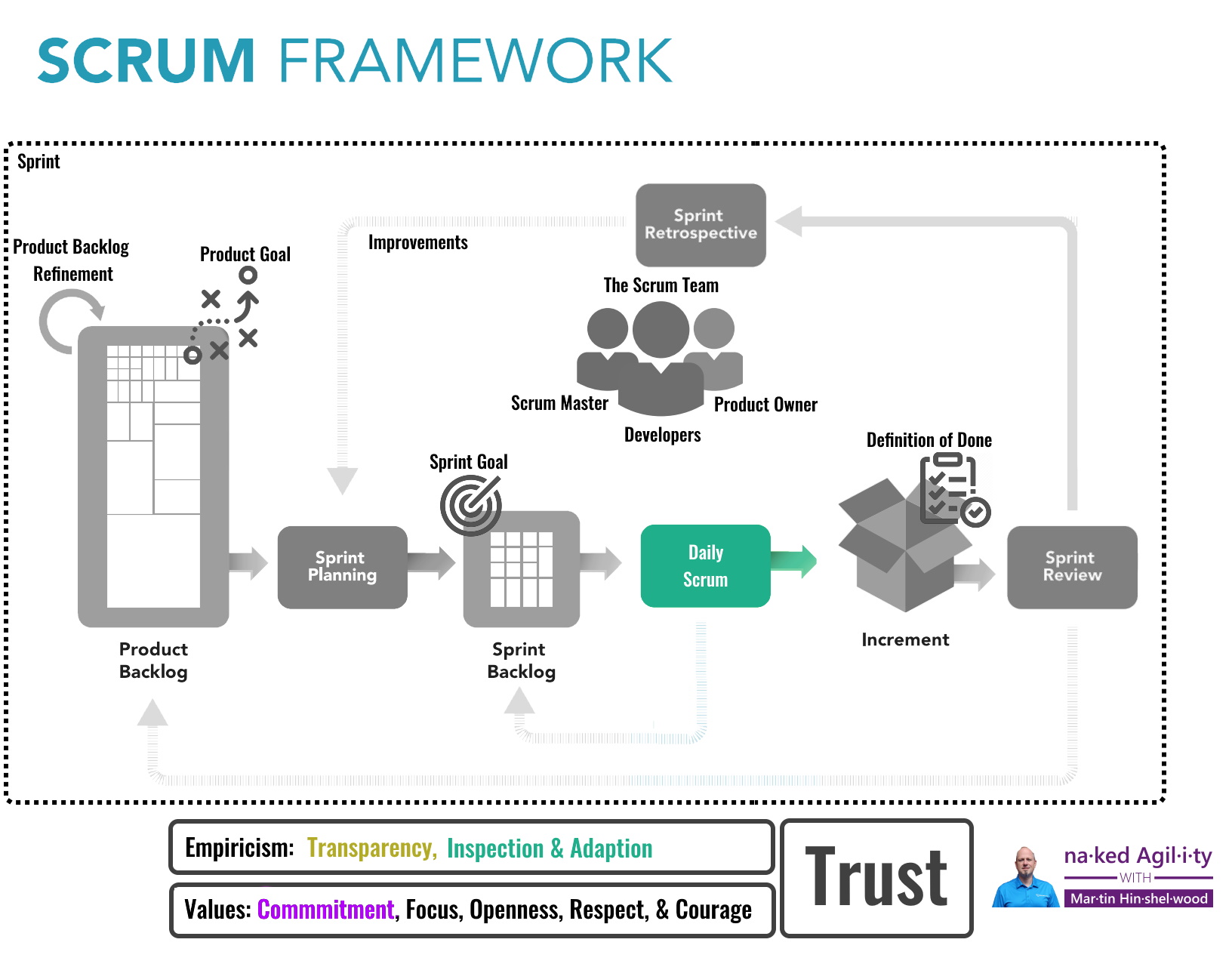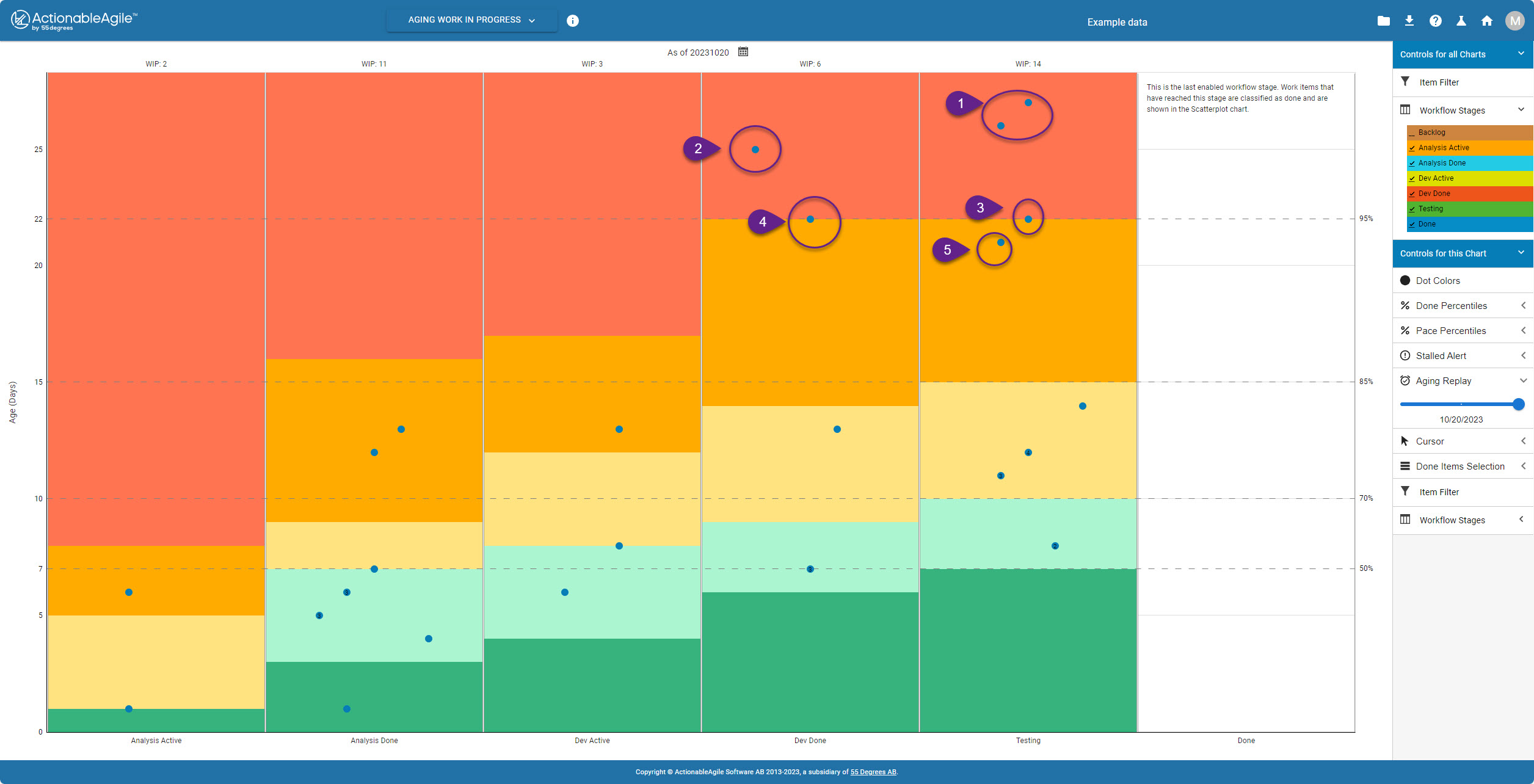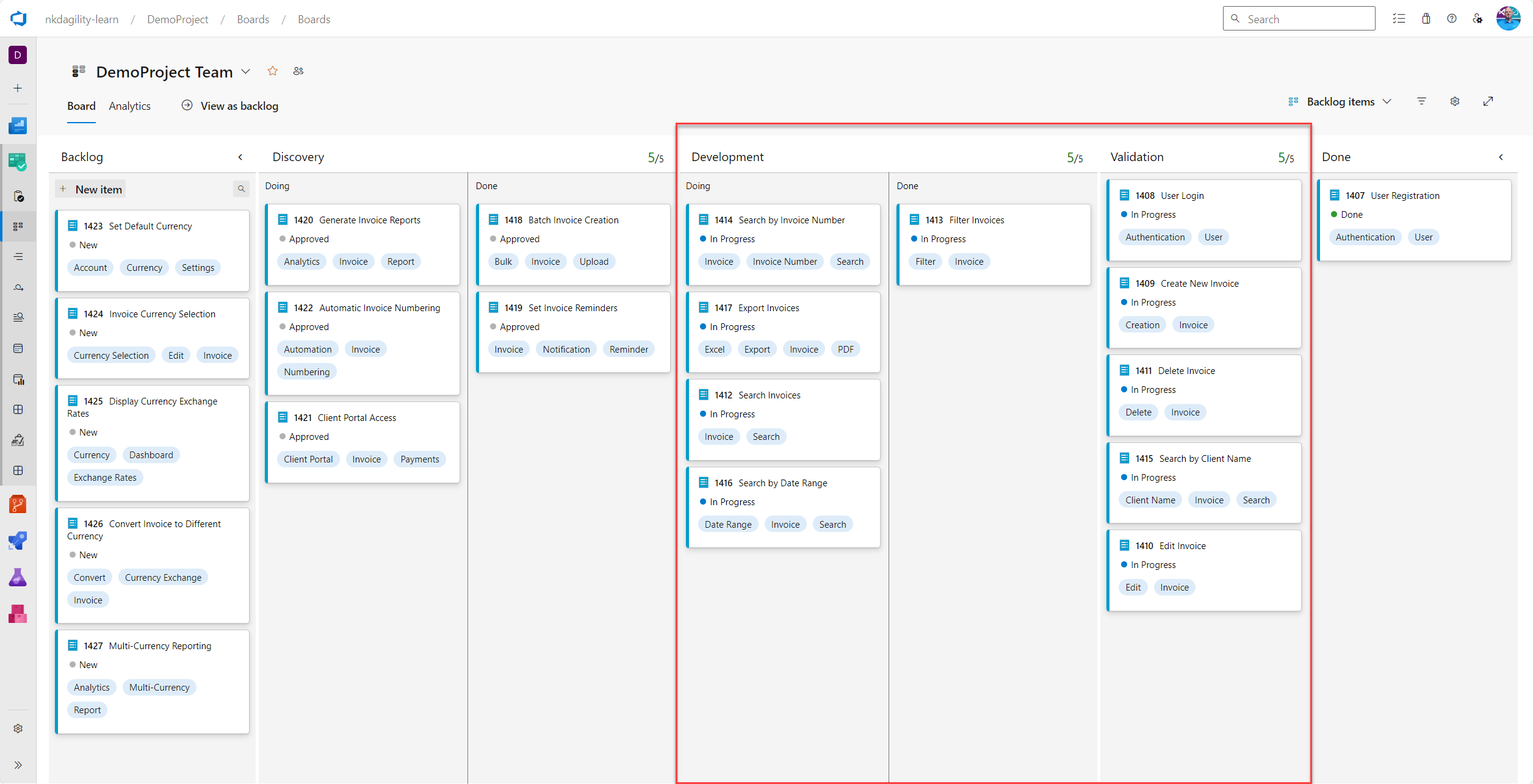Daily Scrum Recipe
Recipe
5 minutes to read
Last Updated: Thu 9 May 2024 08:36
draft
This page is in draft and may include errors or omissions. Please check the discussions for any pending updates and changes to the content or to suggest your own changes.
The Daily Scrum is an essential event in the Scrum framework. It offers the Developers an opportunity to reflect on their progress, and plan for the next 24 hours. But it’s essential to approach it with the right mindset and intent.
Purpose of the Daily Scrum
The primary objective of the Daily Scrum is not merely to go through a checklist of questions. Instead, it’s to actively manage ongoing work and strategize on how best to achieve the Sprint Goal. This meeting is a platform for Developers to discuss their work, challenges, and any impediments they might be facing. By doing so, they can effectively strategize on their next steps and ensure that they are on the right track.
Beyond the Three Questions
While the three standard questions—What did I do yesterday? What will I do today? Are there any impediments in my way?—provide a structure, they shouldn’t become a monotonous routine. Developers should not feel compelled to answer these questions robotically or feel the unnecessary pressure for everyone to speak. The focus should be on meaningful conversation and collaboration.
Beyond the Three Questions
Rather than discussing every item, the team should concentrate on elements in the Sprint Backlog that require intervention or are at risk. By honing in on these areas, the team can proactively address potential challenges and ensure they remain on course.
Emergent Practices
It’s crucial to understand that there’s no one-size-fits-all approach to the Daily Scrum. What works for one team might not necessarily work for another. Practices should emerge based on the team’s unique needs, challenges, and dynamics. Over time, as the team evolves and matures, so will their practices.
Asking more interesting questions
The Daily Scrum is not just a routine check-in. It’s an opportunity for the team to come together, collaborate, and strategise. By focusing on the right areas and fostering open communication, teams can remain aligned with the Sprint Goal and continue delivering value. Remember, the method in which the team conducts the Daily Scrum can vary, and what’s presented here is just one of many ways!

Overview of Flow for Daily Scrum
This recipe leverages a simple flow and consists of the following:
The Developers review their progress towards the Sprint Goal. They should actively manage the work that is in progress and maintain transparency of the present as reflected in the Sprint Backlog.
The Developers should own this event and facilitate it, although Scrum Masters may certainly facilitate as requested or as needed.
Why recipe?
You follow a recipe a few times to build muscle memory and understand the intended outcomes. Once learned one can tweak or change the recipe to adapt the outcomes to one’s own taste.
Suggested Flow Steps
Part 1: Review the Work in Process [~5 mins]
The Developers should review the work currently underway and identify any problems, issues, or missing information required to get to the Sprint Goal.
Getting to the more interesting questions and enabling us to focus only on the most valuable conversations requires that we maintain transparency of the Sprint Backlog so that we can easily see what is going on. We can then visualise that data in ways that allow us to identify those interesting items.
Facilitation Options
You can use the following visualisations:
-
Work Item Aging Graph - A very effective way to review the work that is in progress is to use a Work Item Aging graph and pay particular attention to the oldest items. By actively managing based on the age of items, the Developers can see clearly which items need the most focus, what is blocked, and how long they have been in progress.
 An
advanced form of this is shown here, where we are also overlaying the 50th,
70th, 85th, and 95th percentiles for each of the columns in our process.
Highlighted are 5 anomalies to discuss at this team’s Daily Scrum in the
order of risk to delivery.
An
advanced form of this is shown here, where we are also overlaying the 50th,
70th, 85th, and 95th percentiles for each of the columns in our process.
Highlighted are 5 anomalies to discuss at this team’s Daily Scrum in the
order of risk to delivery. -
Review the Boards - Another critical visualisation for the Daily Scrum is of the work currently in progress using a Board that shows the movement of the smallest unit of value, a Backlog Item.

In this visualisation, the work in progress is everything that is within the bounds of the red box. We can immediately see that validation and development are both at capacity, so neither can take on any additional work. Using WIP Limits in this way, and inspecting them at the Daily Scrum allows teams to easily see constraints and identify bottlenecks in this process. In this case, we may need to focus on validation to get things into done to free up space further “upriver”.
Part 2: Create an Actionable Plan for 24h [~10 min]
The outcome of the Daily Scrum should be an increase in the transparency of the work underway, which should be reflected in the Sprint Backlog. What has happened in the last 24 hours that needs to be reflected on the Sprint Backlog, and what is the plan for the next 24 hours? Does the Sprint Backlog still represent the most essential work to get to the Sprint Goal?
We should leave the Daily Scrum with a plan for the next 24 hours!
Facilitation Options
- Create a Plan [10 min]
Some Common Anti-patterns

Reference
References: Related papers and Articles
Recommended Content
-
We are uncovering better ways of developing software by doing it and helping others do it. These are our values and principles.
-
The Scrum Guide (Guide)The Scrum Guide contains the definition of Scrum.